How to Grow and Care for Monstera Obliqua
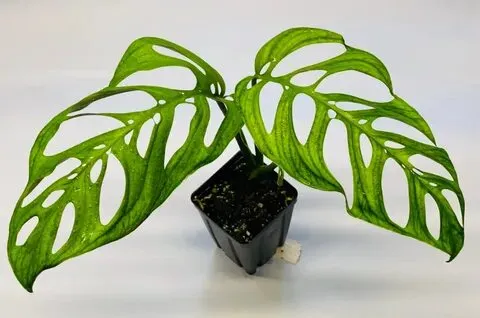
Overview of Monstera Obliqua
Monstera obliqua, often referred to as the unicorn of the plant world, is a rare and highly sought-after species among plant enthusiasts. Known for its distinctive foliage, which features large perforations and a delicate, lacy appearance, this tropical plant has captured the fascination of many. In this comprehensive guide, we will explore everything you need to know about growing and caring for Monstera obliqua.
Understanding Monstera Obliqua
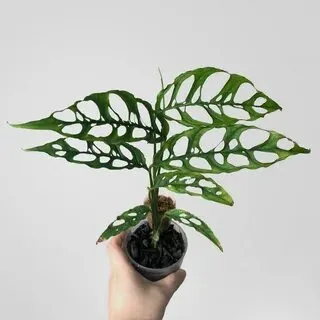
Origin and Natural Habitat
Monstera obliqua is native to the tropical rainforests of Central and South America. This plant thrives in humid, shaded environments where it can climb trees and receive filtered sunlight. Understanding its natural habitat is crucial for replicating similar conditions at home, ensuring the plant’s health and growth.
Unique Characteristics
The most striking feature of Monstera obliqua is its leaves, which are heavily perforated and have a paper-thin texture. These fenestrations, or holes, give the plant a delicate, almost skeletal appearance. Unlike its relative, Monstera deliciosa, the obliqua’s leaves are much thinner and more fragile.
Planting Monstera Obliqua
Choosing the Right Spot: Indoors vs. Outdoors
Deciding where to plant your Monstera Obliqua is crucial. This plant is well-known for its delicate, fenestrated leaves and needs a specific environment to thrive. Indoors, the Monstera Obliqua benefits from a stable climate with indirect sunlight. Place it near a window where it can receive bright, filtered light but not direct sunlight, which can scorch its leaves. Humidity is another essential factor; a humidifier or placing the pot on a tray with pebbles and water can help maintain the necessary moisture levels.
Soil Preparation: Importance of Well-Draining Soil
The Monstera Obliqua requires well-draining soil to prevent root rot, a common issue with many houseplants. Using a mix specifically designed for aroids, which includes components like perlite, orchid bark, and peat moss, can create the ideal environment for your plant’s roots. This mixture allows for good air circulation and drainage, which is vital for the health of the Monstera Obliqua. Avoid heavy, clay-based soils as they retain too much water and can lead to root problems.
Planting Steps: Step-by-Step Guide
- Choosing the Pot: Start by selecting a pot with adequate drainage holes. This will ensure excess water can escape and prevent waterlogging. When I planted my Monstera Obliqua, I chose a terra-cotta pot, which helps with moisture regulation.
- Preparing the Soil: Mix equal parts of perlite, orchid bark, and peat moss. Add a handful of activated charcoal to enhance drainage and prevent root diseases. In my experience, this mix provided excellent drainage and support for the plant.
- Planting the Monstera: Gently remove the plant from its current container, being careful not to damage the roots. Place it in the new pot and fill it with the prepared soil mix, ensuring the roots are well-covered but the base of the plant is at the same level it was previously planted.
- Finding the Right Spot: Place the pot in a location with bright, indirect light. For my Monstera, I found that a spot near an east-facing window provided the perfect amount of light without direct sun exposure.
- Maintaining Humidity: Since Monstera Obliqua thrives in humid conditions, regularly misting the leaves or using a humidifier can mimic its natural environment. I placed a small humidifier near my plant, which significantly improved its growth.
Monstera Obliqua Care
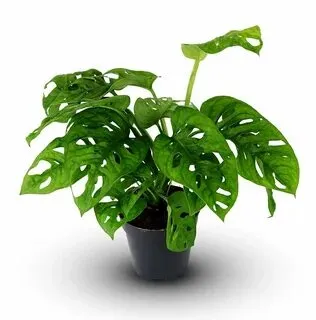
Light Requirements
Monstera obliqua requires bright, indirect light to thrive. Direct sunlight can scorch its delicate leaves, while insufficient light can hinder its growth. An ideal location is near a window with filtered light or in a room with plenty of ambient light.
Best Soil Mix
A well-draining, peat-based potting mix is essential for Monstera obliqua. The soil should retain moisture without becoming waterlogged. Adding perlite or orchid bark to the mix can improve drainage and aeration, promoting healthy root development.
Water Requirements
Maintaining proper moisture levels is key to Monstera obliqua care. The soil should be kept consistently moist but not soggy. Water the plant when the top inch of soil feels dry, ensuring thorough but not excessive watering. Overwatering can lead to root rot, a common issue with this plant.
Temperature and Humidity
Monstera obliqua thrives in warm, humid environments. Ideally, temperatures should be kept between 65-80°F (18-27°C). High humidity levels, around 60-80%, are also beneficial. Using a humidifier or placing the plant on a pebble tray with water can help maintain adequate humidity.
Fertilizer
Regular feeding with a balanced, water-soluble fertilizer will support Monstera obliqua’s growth. Fertilize every 4-6 weeks during the growing season (spring and summer), reducing frequency in the fall and winter when the plant’s growth slows.
Pruning
Pruning is essential to maintain the shape and health of Monstera obliqua. Regularly remove any yellow or damaged leaves, and trim back any leggy growth. Pruning encourages bushier growth and can help control the plant’s size.
Popular Varieties of Monstera Obliqua
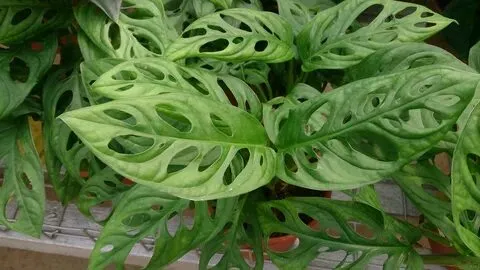
While Monstera obliqua itself is already a rare and unique species, there are several popular varieties that enthusiasts may come across. These varieties may exhibit slight differences in leaf shape, size, and perforation patterns, adding to the diversity and appeal of this extraordinary plant.
Expert tips to Grow and Care for Monstera Thai Constellation
Propagating Monstera Obliqua
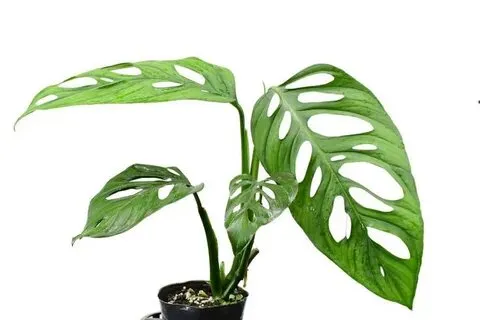
What You’ll Need:
- Sharp knife or pruning shears
- Rooting hormone (optional)
- Sphagnum moss or well-draining potting mix
- Propagation container (clear plastic cup, pot with drainage holes)
- Transparent plastic wrap (optional)
Choosing the Right Time:
Spring and summer are the ideal times to propagate your Monstera obliqua, as this is when the plant is actively growing.
Propagation Technique 1: Stem Cuttings
- Select your cutting: Choose a healthy stem with at least two nodes (the bump where a leaf or aerial root joins the stem). One or two leaves on the cutting are ideal, but not essential.
- Make a clean cut: Using your sharp knife or shears, cut just below a node at a 45-degree angle.
- Prepare the cutting (optional): You can dip the cut end of the stem in rooting hormone to encourage root growth.
- Planting in sphagnum moss: Soak sphagnum moss in water for 15 minutes, then wring it out until damp but not soggy. Place the node of your cutting in the moss, ensuring good contact.
- Planting in potting mix: Alternatively, use a well-draining potting mix. Make a hole deep enough to bury the node and lightly tamp down the soil around the stem.
- Creating a humid environment: Place the pot or cup in a bright, indirect light location. Cover the top with a clear plastic bag or wrap to maintain humidity.
- Patience is key: Check on your cutting every few days. Mist the sphagnum moss or water the potting mix lightly to keep it moist, but not soggy.
- Signs of success: After a few weeks, you should see new growth or roots developing. Once the roots are well-established (around an inch long), you can remove the plastic cover and transplant your new Monstera obliqua to a larger pot.
Potting and Repotting
Monstera obliqua benefits from occasional repotting to provide fresh soil and accommodate its growing root system. Repotting is best done in the spring. Choose a pot that is slightly larger than the current one, ensuring it has adequate drainage holes.
Common Pests & Plant Diseases
Monstera obliqua can be susceptible to common houseplant pests such as spider mites, aphids, and mealybugs. Regularly inspect the plant and treat any infestations promptly with insecticidal soap or neem oil. Proper care and maintenance can help prevent many issues.
Troubleshooting Common Problems
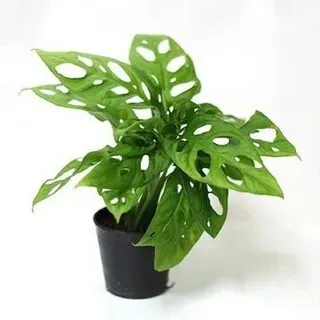
Yellowing Leaves
Yellow leaves can indicate overwatering, underwatering, or nutrient deficiencies. Assess the watering schedule and ensure the plant is receiving adequate light and nutrients.
Leaf Browning
Browning leaf edges can be a sign of low humidity, insufficient watering, or salt buildup from fertilizers. Increase humidity, adjust watering practices, and flush the soil occasionally to remove excess salts.
Slow Growth
Slow growth may result from inadequate light, poor soil quality, or insufficient nutrients. Ensure the plant is placed in an optimal location and receiving regular feeding.
Seasonal Care Tips
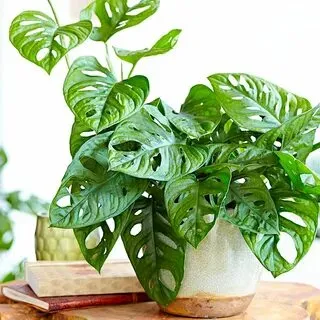
Spring and Summer
During the growing season, Monstera obliqua will benefit from increased watering, regular fertilization, and plenty of bright, indirect light. This is the ideal time for repotting and propagation.
Fall and Winter
In the cooler months, reduce watering and feeding as the plant’s growth slows. Maintain stable temperatures and humidity levels to keep the plant healthy through the dormant period.
Conclusion
Monstera obliqua is a captivating and rare houseplant that requires specific care to thrive. By understanding its natural habitat and unique needs, you can successfully grow and maintain this stunning plant. With the right conditions and regular maintenance, Monstera obliqua will reward you with its extraordinary beauty and distinctive foliage.
